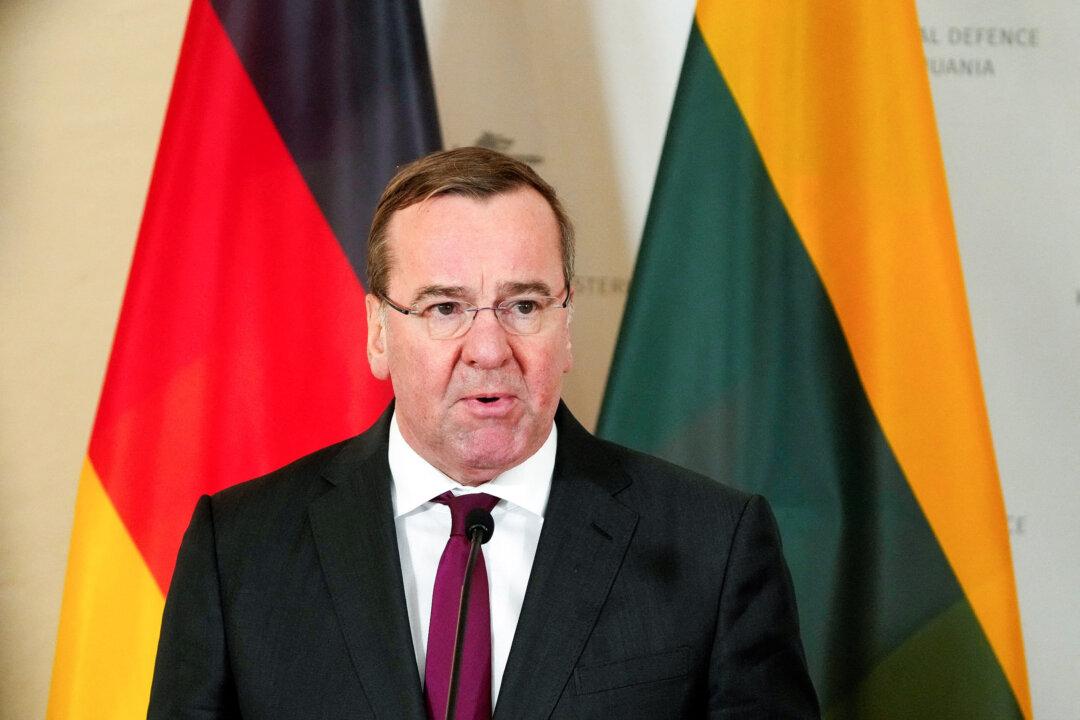Damage to two undersea fiber-optic communication cables in the Baltic Sea—one between Lithuania and Sweden, and the other between Finland and Germany—should be regarded as sabotage, German Defense Minister Boris Pistorius said on Tuesday.
“No one believes that these cables were cut accidentally. I also don’t want to believe in versions that these were ship anchors that accidentally caused the damage,” German Defence Minister Boris Pistorius said before meeting of European Union defense ministers.
“So we have to state—without knowing in concrete terms who it came from—that this is a hybrid action. And we also have to assume—without already knowing it, obviously—that this is sabotage.”
A 218-km (135-mile) internet link between Lithuania and Sweden’s Gotland Island went out of service at about 8 a.m. GMT on Sunday, according to Lithuania’s Telia Lietuva, part of Sweden’s Telia Company.
Later, Finnish state-controlled cyber security and telecoms company Cinia revealed that a separate 1,200-kilometre (745-mile) cable connecting Helsinki to the German port of Rostock has also stopped working, around 2 a.m. GMT on Monday,
“These failures are mostly related to shipping, when a ship hooks the cable and breaks it off somewhere in a shallow place, close to the shore, by dropping anchor incorrectly,” he said on Monday.
Lithuania’s Navy said on Tuesday it had subsequently increased the surveillance of its waters.
The ministers said that the fact “that such an incident immediately raises suspicions of intentional damage speaks volumes about the volatility of our times. A thorough investigation is underway.”
C-Lion1
On Nov. 18, a fault was detected in Cinia’s C-Lion1 cable which runs nearly 1,200 kilometers (about 746 miles) from the Finnish capital, Helsinki, to the German port city of Rostock.The sudden outage implied that the cable was completely severed by an outside force, although a physical inspection has not yet been conducted, Cinia’s Chief Executive Ari-Jussi Knaapila told a press conference.
NewNew Polar Bear
In November 2023, Estonian prosecutors said they were looking into the role of the Hong Kong-registered NewNew Polar Bear container ship after the damage of two subsea telecoms cables in the Baltic Sea.Nord Stream 1, 2 Pipelines
The C-Lion1 cable runs alongside the multibillion-dollar Nord Stream 1 and 2 pipelines. The pipelines each contain two pipes to transport gas from Russia to Germany under the Baltic Sea. Three of four pipes were ruptured by a series of blasts in the Swedish and Danish economic zones in September 2022, releasing vast amounts of methane into the atmosphere seven months after the Russia–Ukraine war began.According to investigations conducted by Danish, German, and Swedish authorities, damage to the pipes was caused by the use of explosives.

She said that Volodymyr Z. was not detained because he was not listed in a database of wanted persons, which meant that the Polish Border Guard had no knowledge of him and no grounds to detain him.
This meant that at the beginning of July, he was able to leave Poland and cross into Ukraine.







